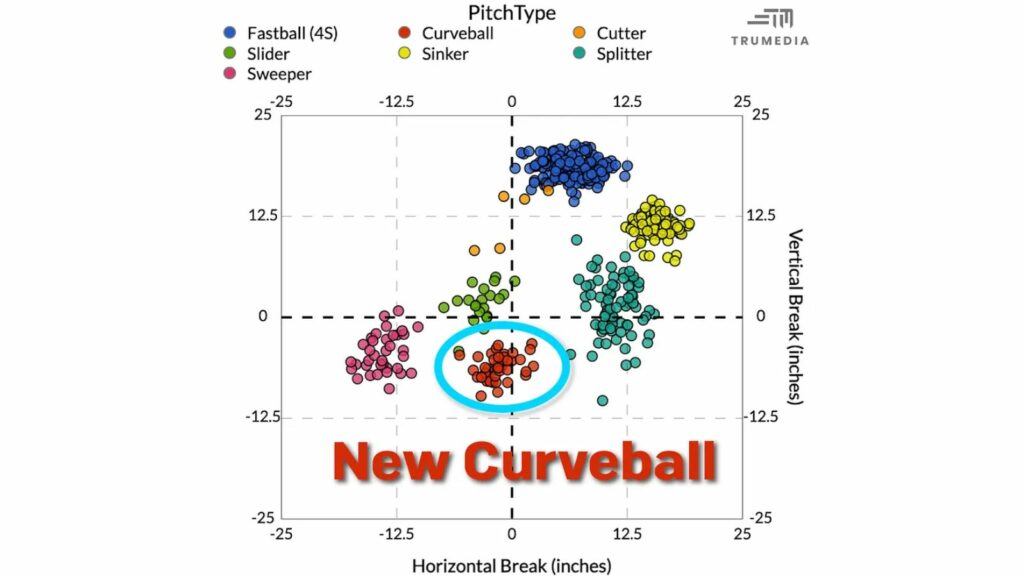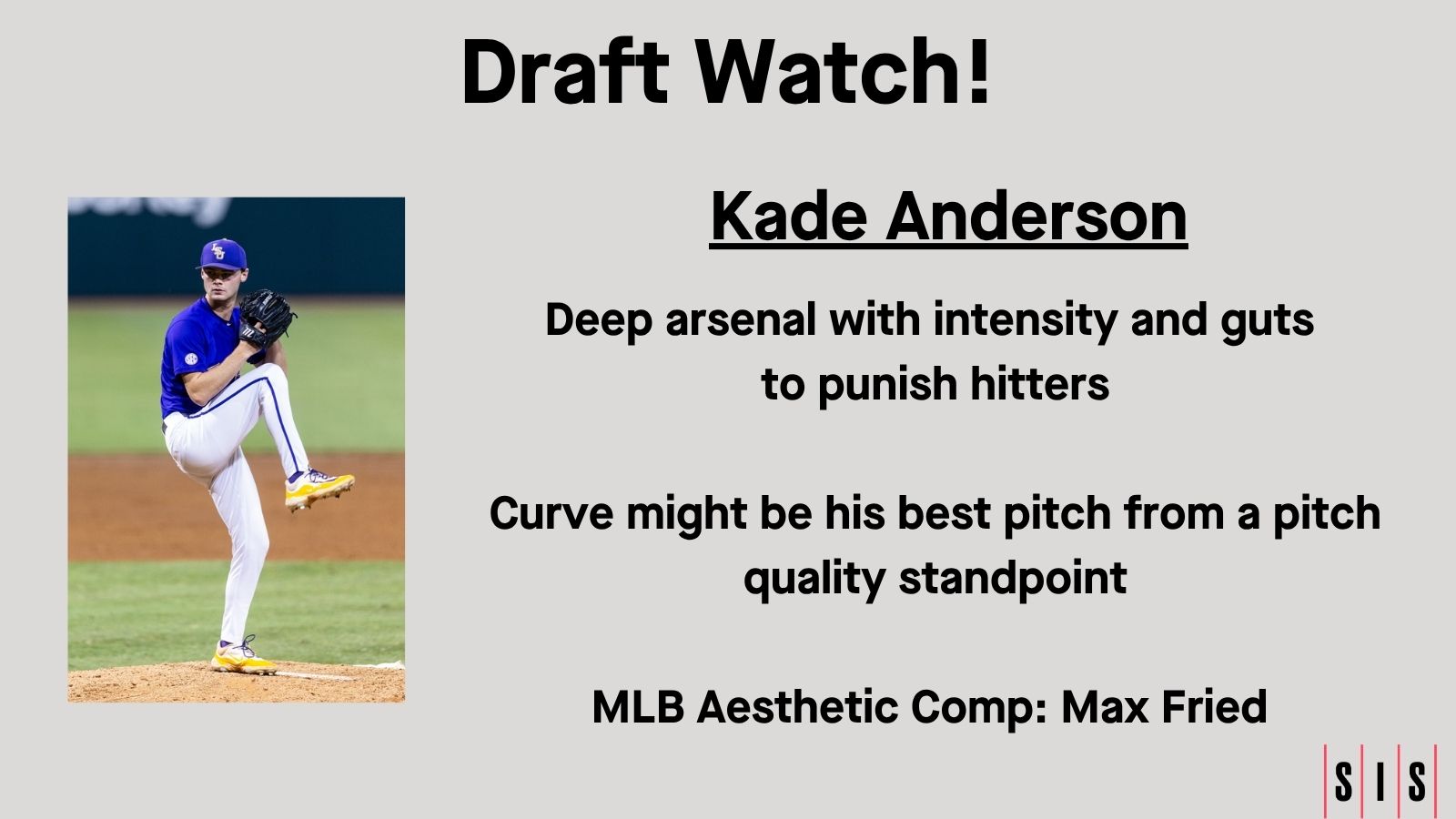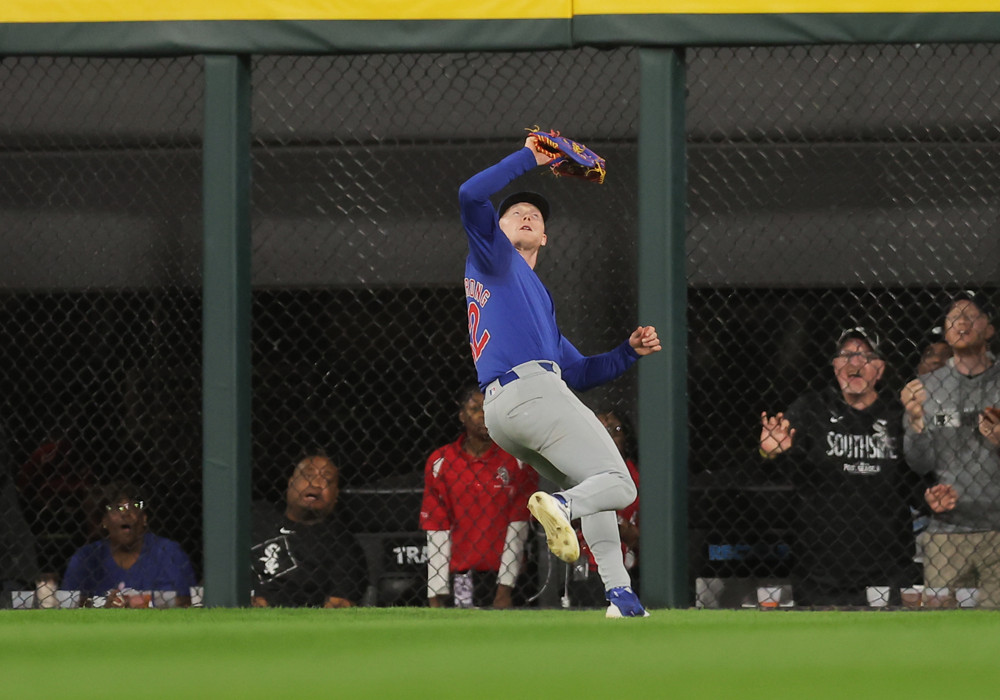MLB Draft Scouting Report: Liam Doyle
| Skill | Grade |
| LHP | |
| Fastball | 70 |
| Slider | 50 |
| Slurve | 50 |
| Splitter | 55 |
| Control/Command | 50/50 |
| Future Value | 55 |
Name: Liam Doyle
College: University of Tennessee
Bio: R/L 6-2, 220 lbs.
DOB: 06/03/2004
Written by Brandon Tew
Analysis:
Liam Doyle, picked 5th overall by the Cardinals, pitches like he just crushed multiple energy drinks in the dugout before his outing, taking the mound like he has a personal feud with every batter. He’s jittery, and his delivery is up-tempo and high energy. His arsenal is fueled by a high-octane fastball that explodes through the top of the zone. The pitch is a legit high-velocity four-seam with carry from an average release height.
If Doyle succeeds in MLB as a starter, it’s with the rest of his arsenal woven in and out of the fastball usage at an effective rate. He gives off the look of a reliever with a high-effort delivery and snappy movements. However, he zones all his pitches and throws strikes at a high enough rate to be in the starter mold right now.
If Doyle lands on more of the relief pitcher track, it will be his secondaries not improving from their current shapes, and his control and command backs up to more fringe-average and below.
College Career:
Liam Doyle began his career at Coastal Carolina, posting a decent ERA and a respectable number of strikeouts. After transferring to Ole Miss for his sophomore season, there was an uptick in strikeouts, even through a rocky season in and out of the bullpen as a starter and high-leverage reliever.
Doyle then found his way to Knoxville, where he pitched with more confidence and improved his conditioning, turning himself into one of the best Friday starters in the SEC.
Doyle began throwing his fastball at a higher velocity. While also holding that velocity deep into starts, and still throwing all his pitches at a decent zone rate.
| Year | ERA | IP | K% | BB% |
| 2023 | 4.15 | 56 1/3 | 29% | 9% |
| 2024 | 5.73 | 55 | 35% | 9% |
| 2025 | 3.20 | 95 2/3 | 43% | 8% |
Pitching Mechanics:
In the windup, Doyle starts with his glove at his stomach. He brings the glove up to his nose before stepping back with his glove foot, bringing the glove back down to his belt as he turns to settle on the third base side of the rubber.
With high-tempo, he enters leg lift with an aggressive move forward, drifting down the mound. There is significant counter-rotation in his front side and hips as he reaches peak leg lift, with the bottom of his cleat pointing out to second base.
He enters a drop-and-drive move, holding his front side into landing, and he turns his glove hand into his body. As he lands at front foot strike, he pulls his glove arm fully into his chest, and his arm flips up to a solid position as he shifts weight to his front side into a lead leg block.
His head pulls off to the right with high effort as he spins out to third base to finish his delivery, falling off hard. It’s high-effort and high-tempo, but Doyle gets the most out of his body to throw hard from his high three-quarters slot.
There might be less room for projection in terms of adding velocity. Still, Doyle has maintained the high-effort delivery and velocity deep into his outings, so keeping that sustained velocity into a full pro ball season of starts will be key.
Arsenal
4s: 94-98 mph avg, 19” IVB, 11” Arm-side | Release: 5.9’
Doyle’s fastball is a blitzball shape in the mid-to-upper 90s; the pitch whizzes through the top of the zone and has an insanely high 40% zone whiff rate. He keeps the fastball up in the zone and pushes the location of it up and away from right-handed hitters.
When he gives up damage on the pitch, it usually is on more 94-95 mph fastballs in the heart of the zone. The attack plan, armside from righties, has worked and should continue to work, leaning into the natural run of the pitch.
Doyle’s fastball profile and velocity made it the best fastball of the college draft class. The rest of the development of his arsenal will honestly decide how good he can be as a starter. Still, Doyle should have no issues handling right-handed hitters with his fastball, and the four-seam up can also protect his secondaries against left-handed hitters, too.
Slider: 85-90 mph avg, 5” IVB, 4” Sweep
Doyle’s shorter slider lives in the slider to cutter range in terms of velocity and break. He landed the pitch more middle than pushing the location to the glove side, even to left-handed hitters.
When the velocity exceeds 87+, it is a better offering. He can build on the arsenal and push more of a true cutter 90-92 mph, and have a possible gyro slider shape play off of the cutter. He uses the cutter more inside to righties and using the cutter and slider away from lefties.
Overall, his feel for zoning the slider is good, but refining the command and moving the location more down in the zone, while also having a more vertical cutter, would be ideal.
Slurve: 78-82 mph avg, -3” IVB, 10” Sweep
Doyle’s slurve is an interesting pitch. As a pronator, he throws with his hand and wrist turning over as he stays more behind the ball to apply force to the ball. This allows Doyle to create good backspin and carry on his four-seam.
The downside is he can’t effectively create a sweep on pitches like a sweeper or slider as easily when getting to the side of the ball. When he forces this shape, it leads to a bigger and significantly slower breaker that should be categorized as more of a slurve than a sweeper because of the depth of the pitch.
You could have Doyle lean into a more vertical curveball or even a more gyro slider shape, and classify it as a curveball in a “death ball” shape.
The death ball is a pitch that has the bullet-like spin of a slider but sits with more depth than a traditional bullet slider. Pete Fairbanks, Ben Brown, and Kumar Rocker throw hard death balls that perform well.

I think the pitch plot above from Lance Brozdowski’s pitcher notes on Bryce Miller’s death ball last season illustrates a possible shape Doyle could get to with a mid-80s breaker.
A left-hander that gets to this shape and has expanded his arsenal is Cole Ragans, so if Doyle can figure out this bullet-slider shape, he could pair it with the bigger slurve.
The slurve does create timing issues for both right-handed and left-handed batters and induces swings as well. There’s probably just a harder breaking ball Doyle can get to inside of his mix.
Splitter: 84-89 mph Specs: 2” IVB, 10” Arm-side
Doyle’s splitter is almost purely a two-strike pitch for him, but he will drop offspeeds early in the count if he feels a hitter is on his fastball. (Not many hitters are on his fastball even if they know it’s coming.)
In its current form, it’s probably a below-average splitter, but Doyle should be able to get to an above-average offspeed pitch at a hard velocity. The offspeed would most likely be used for opposite-handed hitters, but if he can find more of a breaking ball glove side there’s less concern about the splitter or changeup because of how well his fastball performs against righties.
An offspeed for the 2nd and 3rd time through the order would be nice as a wrinkle inside of his arsenal for usage purposes.
Projection:
Doyle’s fastball is a true double-plus pitch, performing at elite rates in college. The Cardinals are banking on the fastball being a true weapon in his arsenal. Building off a dominant fastball like Doyle’s makes him an intriguing prospect.
His success as a starter will hinge on continued strike throwing and solid command of his pitches, a foundation he already has in being able to zone multiple offerings at a good rate.
Overall, Doyle should be able to add a harder breaking ball to his arsenal to combat left-handed hitters; the fastball’s performance against right-handed hitters should continue if he gets the offering up in the zone.
The Cardinals are currently evaluating a starter profile with a higher upside due to his fastball, but with a wider variance in his profile if his control and command dip below average. That was something control-wise that didn’t appear to be an issue for Doyle for most of the 2025 college season.
Doyle has an exceptional fastball, but the rest of his arsenal will be the driving force behind his success in MLB.
Aesthetics Comp: Robbie Ray (Body Comp, Up-tempo delivery)



